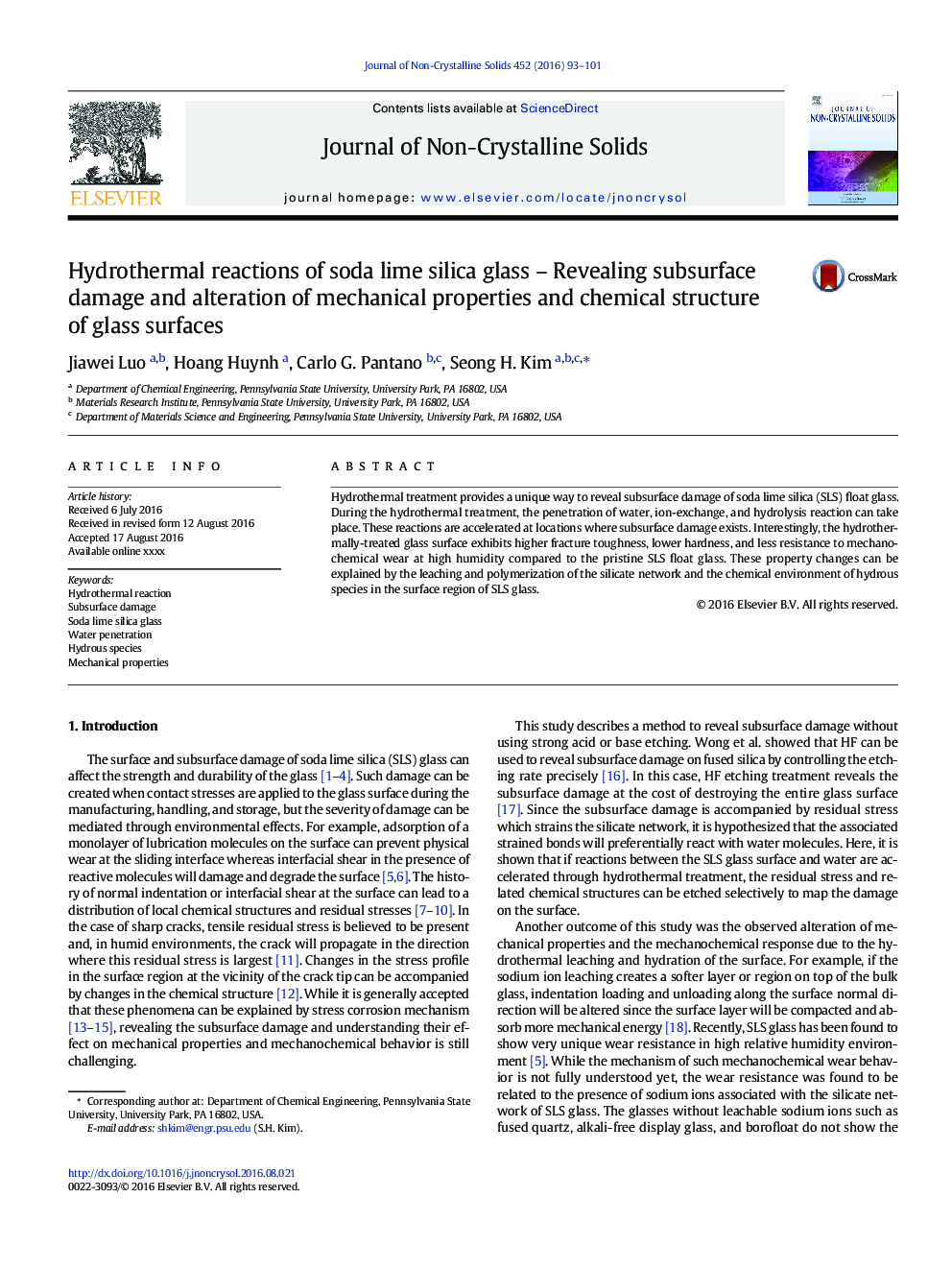| Article ID | Journal | Published Year | Pages | File Type |
|---|---|---|---|---|
| 1480093 | Journal of Non-Crystalline Solids | 2016 | 9 Pages |
Abstract
Hydrothermal treatment provides a unique way to reveal subsurface damage of soda lime silica (SLS) float glass. During the hydrothermal treatment, the penetration of water, ion-exchange, and hydrolysis reaction can take place. These reactions are accelerated at locations where subsurface damage exists. Interestingly, the hydrothermally-treated glass surface exhibits higher fracture toughness, lower hardness, and less resistance to mechanochemical wear at high humidity compared to the pristine SLS float glass. These property changes can be explained by the leaching and polymerization of the silicate network and the chemical environment of hydrous species in the surface region of SLS glass.
Keywords
Related Topics
Physical Sciences and Engineering
Materials Science
Ceramics and Composites
Authors
Jiawei Luo, Hoang Huynh, Carlo G. Pantano, Seong H. Kim,
